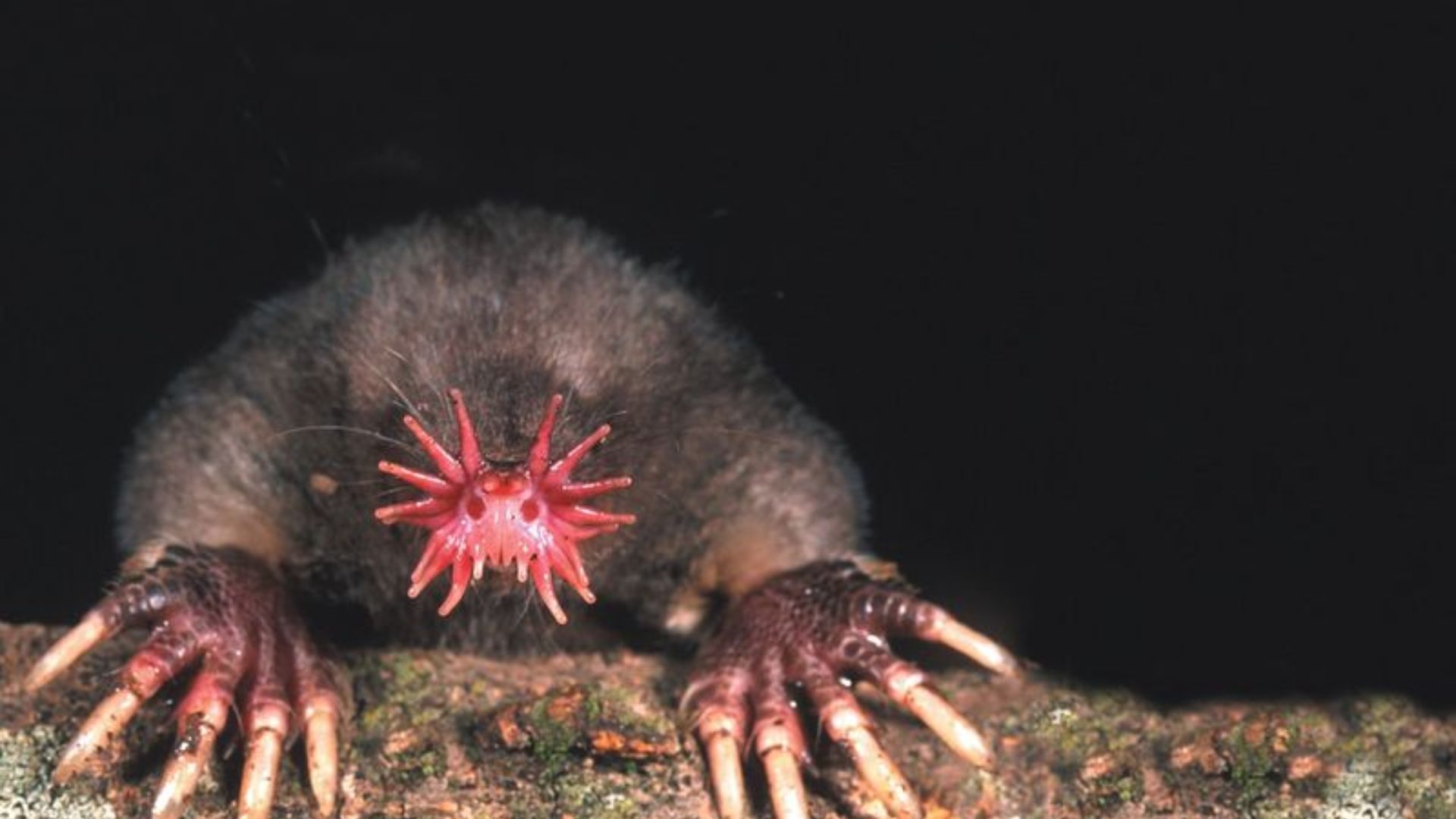In the wild, survival isn’t just about strength or speed. Some animals have evolved with remarkable built-in tools that help them thrive in their environments.
From creating shelter to hunting food, these creatures showcase nature’s ingenuity. Let’s explore some of these fascinating examples.
1. Woodpecker
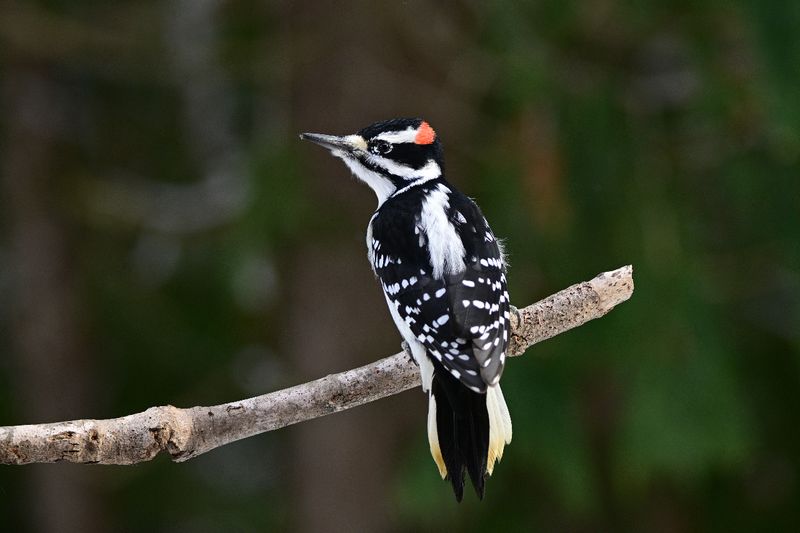
Woodpeckers are nature’s expert carpenters. With their strong, pointed beaks, they can drill into trees to find insects hiding beneath the bark.
This built-in tool helps them hunt for food and also create nests. Their beak is made of tough keratin, enabling them to peck at wood without injury. These birds have another unique adaptation: a special shock-absorbing skull that protects their brain from the force of impact.
In addition to their beaks, woodpeckers have long, sticky tongues that can extend far beyond the tip of their beak.
This allows them to reach deep into holes to extract insects. Their tongues are also barbed, helping them snag their prey effectively. This combination of adaptations makes woodpeckers highly efficient hunters in forested areas.
When it comes to building nests, woodpeckers use their beaks to carve out cavities in trees. These cavities provide safety and warmth for their eggs and young chicks. Some species even use the same nest cavities for multiple years.
By creating these holes, woodpeckers also help other cavity-nesting species that rely on such spaces for their own nesting purposes. It’s a fascinating example of how one built-in tool can serve multiple survival purposes in the animal kingdom.
2. Archerfish
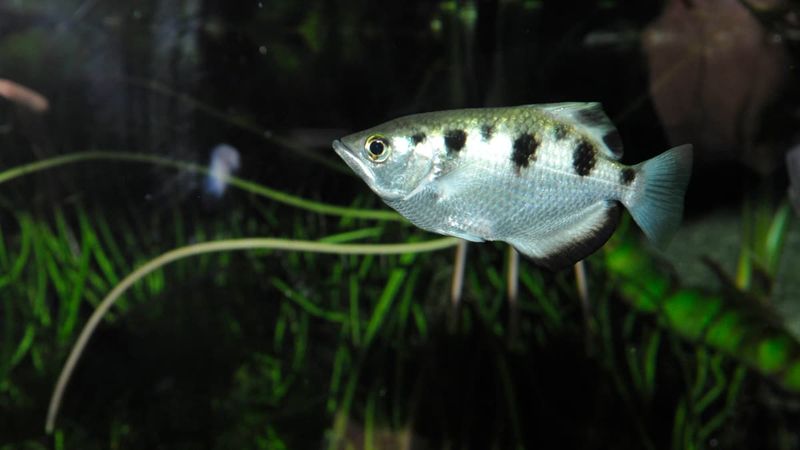
Archerfish have a remarkable built-in tool that sets them apart from other fish: their ability to shoot jets of water at insects resting on foliage above the water’s surface. This precision skill allows them to knock their prey into the water, turning the tables in their favor.
Archerfish are equipped with a specialized groove in the roof of their mouth. By closing their gills and rapidly expelling water through this groove, they can create a powerful stream capable of hitting targets several meters away. T
his remarkable hunting technique requires not only physical adaptations but also keen eyesight to aim accurately.
The archerfish’s ability to hunt prey above water is a testament to nature’s creativity. It allows them to exploit a food source that many other aquatic creatures cannot access, giving them an evolutionary advantage in their habitat.
Interestingly, young archerfish practice their shooting skills before mastering this technique, showcasing a blend of instinct and learned behavior. Their precise water-shooting ability is a perfect example of a built-in tool tailored for survival.
3. Platypus
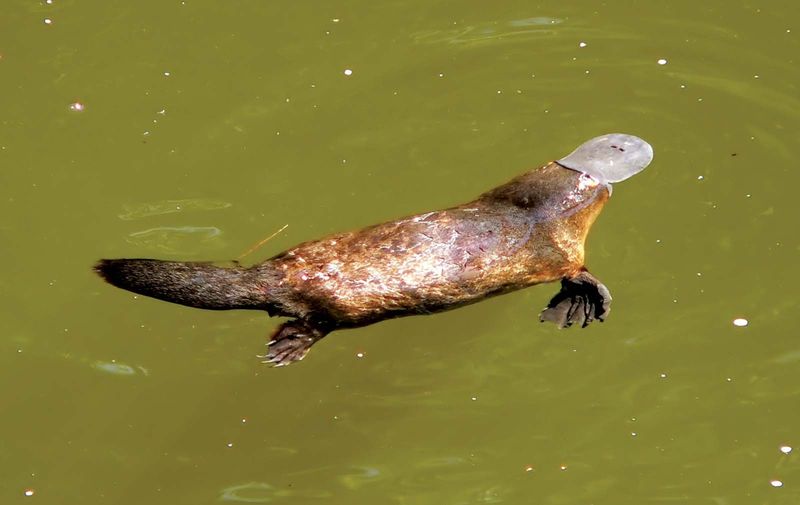
The platypus is one of nature’s most unique creatures, equipped with a built-in tool that aids in its survival: its bill.
Unlike the beaks of birds, the platypus’s bill is soft and pliable, packed with sensors that detect the electric fields produced by the movements of their prey. This remarkable ability allows them to hunt underwater with their eyes, ears, and nostrils closed.
When searching for food, the platypus sweeps its bill from side to side to pick up signals from shrimp, insects, and other small creatures hiding in the muddy bottoms of rivers and streams.
This electrolocation ability is rare among mammals and gives the platypus a significant advantage in the murky waters of its habitat.
Besides its bill, the platypus also utilizes webbed feet for swimming and claws for digging burrows along riverbanks.
These physical traits further enhance its ability to thrive in aquatic environments. The platypus is a remarkable example of how evolutionary pressures can lead to the development of specialized tools that cater to an animal’s specific needs and lifestyle.
4. Termite
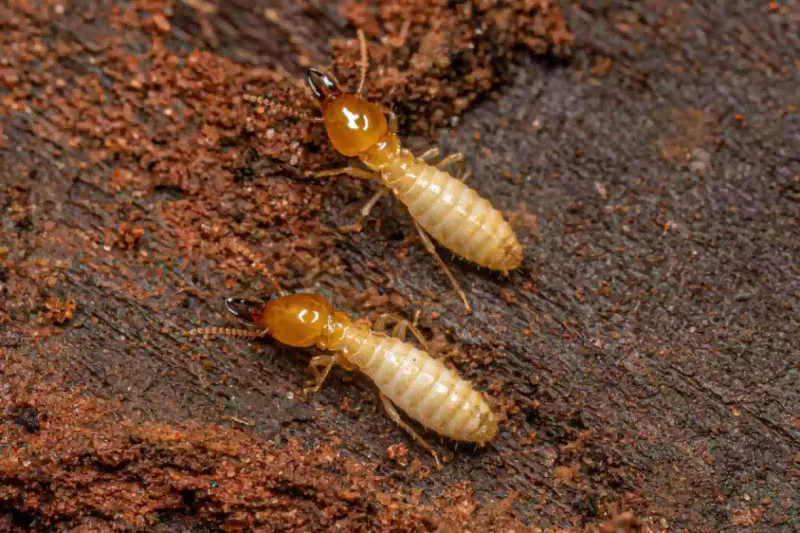
Termites are master builders in the animal kingdom, equipped with the ability to construct massive, complex mounds that serve as their homes.
These mounds are not just shelters; they are intricately designed with built-in ventilation systems that regulate temperature and humidity, crucial for the survival of the colony.
Termites use their saliva to mold soil into rigid structures, demonstrating their incredible teamwork and engineering skills.
Within these mounds, they create a network of tunnels and chambers that facilitate efficient movement and communication. The central chimney system of the mound allows hot air to rise and escape, drawing in cooler air from below.
This architectural feat is a testament to the termites’ collective intelligence and adaptability. These structures can reach impressive heights and withstand harsh environmental conditions.
Termites’ ability to build such elaborate habitats showcases nature’s ingenuity in developing built-in tools for survival. Their constructions not only protect them from predators but also create a stable environment for raising their young.
5. Mantis Shrimp
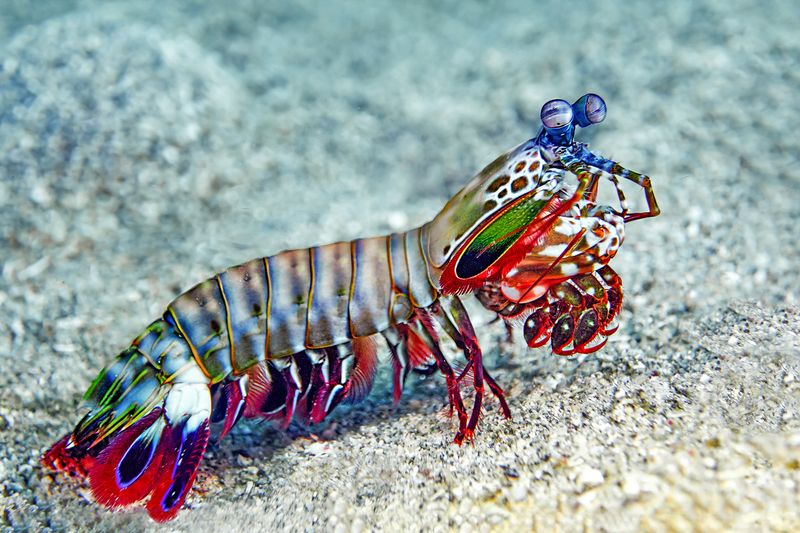
Mantis shrimps are renowned for their extraordinary hunting tool: the club-like appendages they use to deliver incredibly powerful strikes. These creatures have one of the fastest and most forceful punches in the animal kingdom, capable of breaking the shells of prey like crabs and mollusks.
Their limbs move so fast that they create cavitation bubbles in the water, which collapse with a loud snap and enough force to stun their prey.
This remarkable ability not only aids them in capturing food but also in defending themselves against predators. The mantis shrimp’s strike is so powerful that it can even break aquarium glass.
Beyond their striking ability, mantis shrimps are known for their incredible vision. They have the most complex eyes in the animal kingdom, capable of detecting polarized light and seeing a vast range of colors. This vision helps them navigate their vibrant reef environments and locate prey.
The mantis shrimp’s combination of visual acuity and powerful appendages makes it a formidable hunter in its underwater world.
6. Beaver
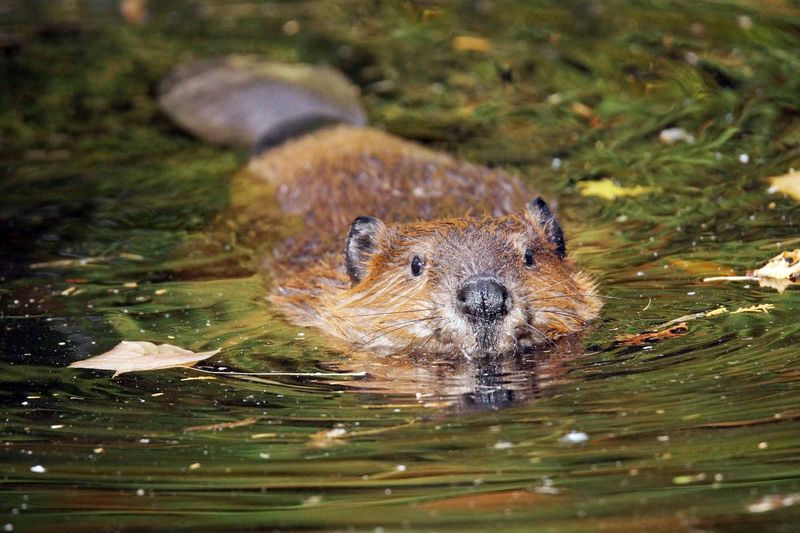
Beavers are nature’s engineers, with their sharp teeth serving as their primary tool for survival. Their continuously growing incisors allow them to fell trees, which they use to construct dams and lodges.
These structures serve multiple purposes, providing shelter and protection from predators while also creating ponds that support their aquatic lifestyle.
The beaver’s ability to change its environment is unmatched in the animal kingdom, second only to humans. By building dams, beavers create wetland habitats that support a wide array of biodiversity. This behavior exemplifies how a single physical adaptation can have a profound impact on an ecosystem.
Beavers’ dams help control water flow and reduce erosion, benefiting both the animals and plant life in the area.
Their lodges, built with sticks and mud, provide insulated shelter for raising young and storing food. The beaver’s use of its teeth to shape its surroundings showcases a remarkable built-in tool for survival, demonstrating the profound influence animals can have on their environment.
7. Octopus
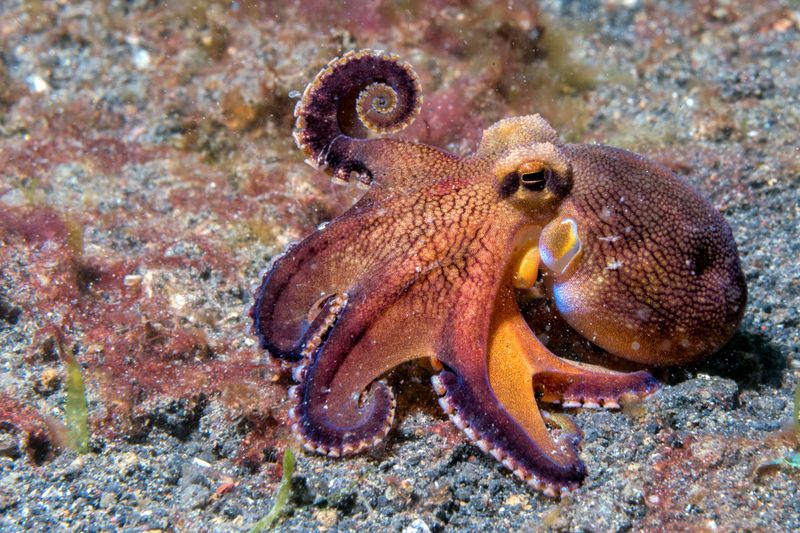
Octopuses are among the most intelligent and adaptable creatures in the ocean, with their tentacles serving as versatile tools for survival.
These eight arms are equipped with sensitive suckers that allow the octopus to manipulate objects, capture prey, and even open jars, demonstrating remarkable problem-solving skills.
Each tentacle is lined with hundreds of suckers, which can taste and touch, helping the octopus explore its environment.
This ability to interact with the world around them makes octopuses adept hunters and escape artists. Their tentacles are not only tools for physical interaction but also for sensory exploration.
In addition to their tentacles, octopuses possess the ability to change color and texture, using specialized cells in their skin called chromatophores.
This camouflage helps them evade predators and hunt prey effectively. The combination of dexterous tentacles and adaptive camouflage provides octopuses with a suite of tools for survival in the diverse and often challenging ocean environment.
8. Chameleon
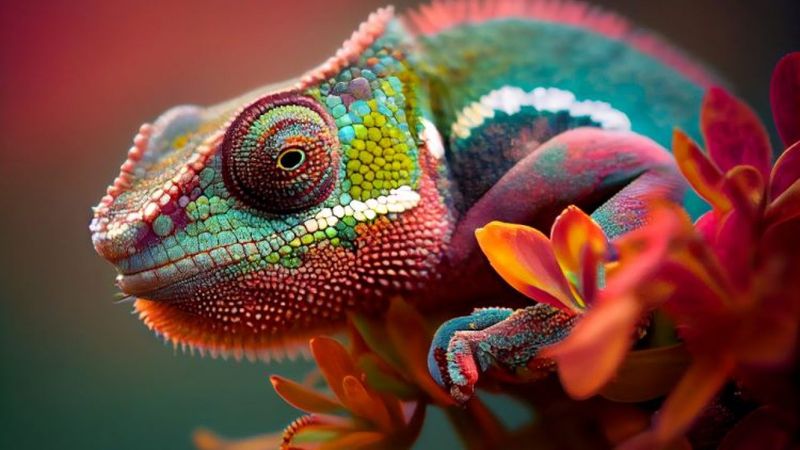
Chameleons are unique reptiles known for their extraordinary ability to change color, but their built-in tool for survival is their long, sticky tongue. This specialized organ can extend more than twice the length of their body to capture insects from a distance, ensuring they can feed without having to move much.
The chameleon’s tongue is a marvel of biological engineering. It is stored coiled at the back of the mouth and, when released, shoots out with incredible speed and precision.
The tip of the tongue is sticky, allowing it to hold onto prey securely. This rapid strike capability is essential for catching fast-moving insects in their often dense, forested habitats.
In addition to their tongues, chameleons possess independently moving eyes, giving them a 360-degree view of their surroundings.
This allows them to spot prey and predators without needing to turn their bodies. The combination of a long tongue and unique vision makes chameleons highly effective hunters in their natural environments.
9. Bowerbird
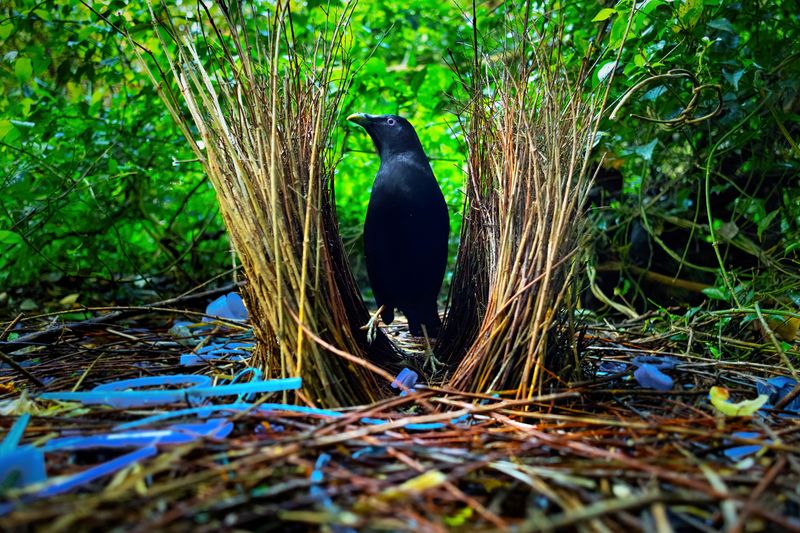
Bowerbirds are famous for their unique courtship behavior, which involves building intricate structures known as bowers to attract mates. These birds use their beaks as tools to gather and arrange twigs, leaves, and colorful objects, creating a visually appealing display to woo potential partners.
The construction of a bower is not just about gathering materials; it involves careful planning and design. Male bowerbirds often spend weeks perfecting their bowers, adjusting the placement and color scheme to maximize attractiveness.
This behavior showcases their creativity and intelligence, as well as their ability to use built-in tools effectively.
In addition to building bowers, these birds often mimic sounds from their environment, adding an auditory element to their display.
The combination of visual and auditory signals increases their chances of attracting a mate. Bowerbirds demonstrate that sometimes the tools for survival are not just physical adaptations but also behavioral strategies that enhance reproductive success.
10. Star-Nosed Mole
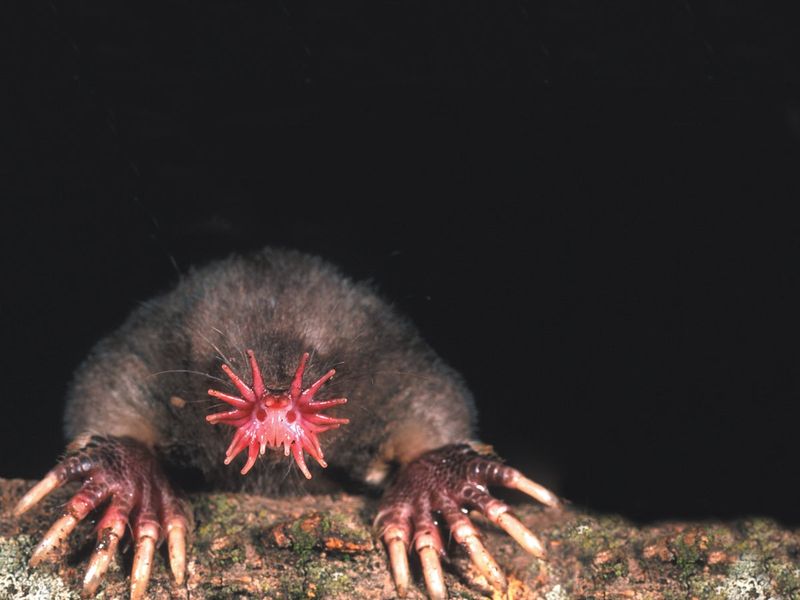
The star-nosed mole is an extraordinary creature with a built-in tool unlike any other: its star-shaped nose.
This highly sensitive organ is used to detect prey in the darkness of its subterranean home. The nose is equipped with 22 fleshy appendages covered in thousands of sensory receptors, allowing it to identify objects by touch with remarkable speed and accuracy.
This mole can identify and consume prey in a split second, making it the fastest-eating mammal on the planet.
The sensory organs in its nose are so sensitive that they can detect the vibrations of insects and small creatures as they move through the soil. This adaptation is crucial for survival in their dark, damp tunnel environments.
In addition to its nose, the star-nosed mole has powerful claws for digging through soil and creating extensive burrow systems.
These burrows provide protection from predators and access to food sources. The combination of a star-shaped nose and digging ability illustrates how specialized adaptations can serve as effective survival tools in challenging environments.

